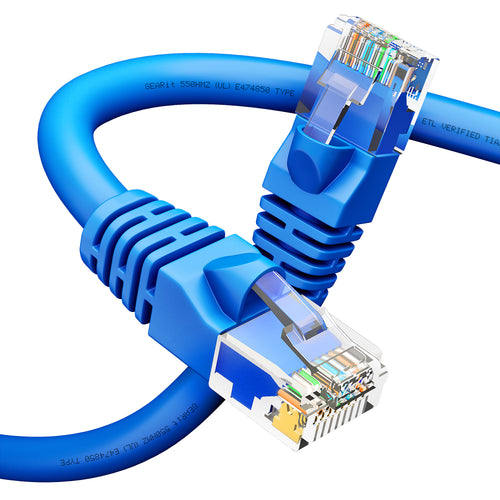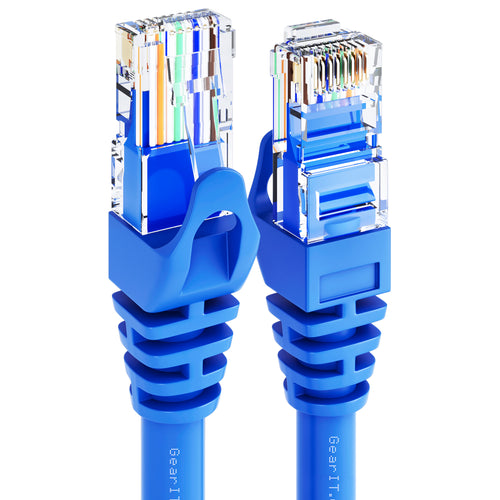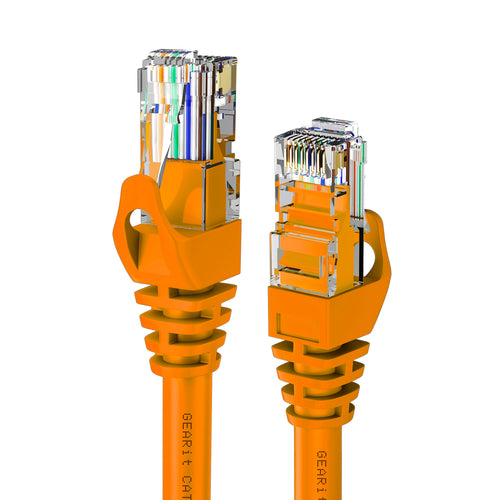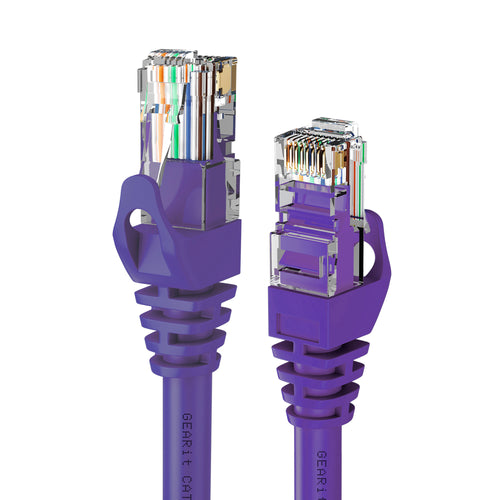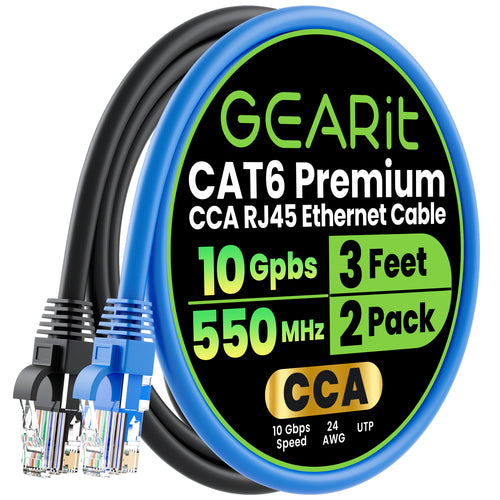
A LAN cable is a vital component in the world of networking. It connects devices within a Local Area Network (LAN), allowing them to communicate efficiently and share resources. Whether you're at home or in an office, LAN cables help create a fast and reliable connection between computers, printers, and other devices.
In this article, you will discover the different types of LAN cables, how they function, and their advantages over wireless connections. You'll also gain insights into how to choose the right cable for your needs, ensuring you optimize your network performance.
Understanding LAN cables is essential for anyone looking to improve their internet setup. By the end, you’ll have a clearer picture of why these cables play such an important role in modern networking.
What is a LAN Cable?
A LAN cable is essential for creating a Local Area Network (LAN), which connects multiple devices in a specific area. These cables allow devices like computers, printers, and routers to communicate with each other effectively.
Definition and Purpose of a LAN Cable
LAN stands for Local Area Network. A LAN cable is used to connect devices within a limited area, such as your home, office, or school.
This cable plays a vital role in enabling communication between various networked devices. By using a LAN cable, you can share resources like files and internet access. The cable ensures a stable connection and typically offers better speeds than wireless options.
Devices connected through a LAN cable can exchange data quickly and securely. This is important for tasks that depend on reliable connections, such as streaming or video conferencing.
Types of LAN Cables
There are several types of LAN cables available. Each type varies in speed, construction, and intended use.
Here’s an overview:
|
Cable Type |
Speed |
Maximum Length |
Notes |
|
Cat5 |
Up to 100 Mbps |
100 meters |
Basic networking; less common now. |
|
Up to 1 Gbps |
100 meters |
Enhanced version of Cat5; popular. |
|
|
Up to 10 Gbps |
55 meters |
Good for high-speed connections. |
|
|
Cat6a |
Up to 10 Gbps |
100 meters |
Supports higher frequencies. |
|
Up to 10 Gbps |
100 meters |
Better shielding for interference. |
These types cater to different networking needs. For most home setups, Cat5e or Cat6 is suitable. If you need faster speeds and better shielding, consider using Cat6a or Cat7.
LAN Cable Categories
LAN cables can also be classified into different categories based on their specifications and performance. The most common types include:
-
Twisted-pair cables: These are the most widely used in LANs. They have pairs of wires twisted together to reduce interference. Cat5, Cat5e, Cat6, and Cat7 are all twisted-pair cables.
-
Coaxial cables: While not typical for LANs, coaxial cables can connect devices to the internet or a cable service. They have a central copper core surrounded by insulation and an outer metal shield.
- Fiber optic cables: These use light to transmit data and can provide very high speeds over long distances. They are less common in standard LAN setups but are valuable for backbone connections.
What is a LAN Port?

A LAN port is a socket on a computer or other device where you can plug in a network cable. This cable connects the device to a local area network (LAN), allowing it to communicate with other devices and access the internet. It's often used to connect to routers, switches, or modems.
What is a LAN Cable vs Ethernet Cable?
The terms LAN cable and Ethernet cable are often used interchangeably, but they have distinct meanings.
A LAN cable is a general term for any cable that connects devices in a Local Area Network. This includes many types of cables designed for different uses.
An Ethernet cable, on the other hand, specifically refers to a type of LAN cable that adheres to the Ethernet protocol. It is designed for data transmission within networks, making it a popular choice.

Key Differences
|
Feature |
LAN Cable |
Ethernet Cable |
|
Definition |
General term for network cables |
Specific type of LAN cable |
|
Protocol |
Can use various protocols |
Follows Ethernet standards |
|
Examples |
Fiber optic, coaxial, Ethernet cables |
Cat 5, Cat 6, Cat 7 cables |
In practical terms, you might use a LAN cable to connect your router to various devices. If those devices communicate using the Ethernet protocol, then you are likely using Ethernet cables.
When setting up your network, choosing the correct cable type is essential for achieving optimal performance and speed.
LAN Cable vs. Patch Cable
A LAN cable and a patch cable serve similar purposes in connecting devices to a network, but they are used in different scenarios.
A LAN cable is typically longer, sometimes stretching up to hundreds of feet, and is designed for permanent installations such as wiring inside walls or ceilings. It is less flexible because it is meant to stay in place for long periods.

On the other hand, a patch cable is usually much shorter, often just a few feet, and is intended for temporary connections, like linking a computer to a router. Patch cables are more flexible and easier to handle, making them ideal for quick, short-term connections.
In summary, while both cables are essential for network connectivity, LAN cables are best for long, fixed connections, and patch cables are perfect for short, temporary ones.
Uses of LAN Cables
LAN cables are essential for creating reliable connections between various devices in both home and office settings. They offer superior speed and stability compared to wireless options. Here’s how LAN cables enhance different environments.
Home Networking
In your home, LAN cables play a vital role in connecting devices like computers, gaming consoles, smart TVs, and routers. Wired connections provide lower latency and faster speeds, which can be crucial for activities like gaming and streaming.

When you use a LAN cable, it can help minimize interruptions that often come with Wi-Fi. This is particularly important when multiple devices are connected. You can enjoy seamless online experiences with less lag and buffering, making it ideal for families with many users.
Key connections in a typical home network include:
- Router to Computer: Ensures stable internet access.
- Router to Smart TV: Supports high-quality streaming.
- Router to Gaming Console: Offers competitive online gaming performance.
Office and Commercial Use
In office and commercial settings, LAN cables are vital for creating a robust network. They connect workstations, servers, printers, and other devices, ensuring quick and stable communication across the network.
With LAN cables, your office can achieve a network that supports heavy data usage without drops in performance. This stability is essential for tasks like video conferencing, large file transfers, and cloud applications.
Consider the following uses of LAN cables in an office:
- Connecting Workstations to Servers: Facilitates quick access to shared resources.
- Linking Printers to Computers: Ensures everyone can print with ease.
- Creating a Stable Internet Connection: Essential for productivity, meeting deadlines, and ensuring smooth operations.
Having a wired setup reduces the risk of connection issues that can affect productivity. It also enhances security, which is crucial in handling sensitive information.
Benefits of Using a LAN Cable
Using a LAN cable offers several advantages over Wi-Fi connections.
- Speed: LAN cables can provide faster download and upload speeds. You can often achieve speeds up to 1 Gbps or more, compared to typical Wi-Fi speeds that may slow down, especially in crowded areas.
- Reliability: A wired connection is generally more stable. With a LAN cable, you don’t have to worry about interference from walls or electronic devices that often affect Wi-Fi signals.
- Security: LAN cables offer better security. It is harder for outsiders to access your network since they would need physical access to the cable.
- Lower Latency: For activities like online gaming and video streaming, lower latency is crucial. LAN cables reduce lag, giving you a smoother experience during important online activities.
- Essential Use Cases:
- Online Gaming: A wired connection ensures minimal lag, which can be vital for competitive gaming.
- Video Streaming: High-definition video streaming benefits from a consistent and fast connection, which LAN cables provide.
- Maintenance Costs: In the long run, LAN cables can save you money on maintenance since they are less likely to experience connection issues compared to Wi-Fi.
Switching to a LAN cable can significantly enhance your network experience.
How to Choose the Right LAN Cable?
Selecting the right LAN cable involves considering several important factors. Key elements include speed requirements, distance limitations, the environment where the cable will be used, and future-proofing needs.
Factors to Consider
-
Speed Requirements: Determine the speed your network needs. For example, if you need speeds up to 1 Gbps, a Cat-5e cable will work. For speeds up to 10 Gbps, opt for a Cat-6 or higher.
-
Distance: Different cable types have distance limitations. Cat-5e is effective up to 100 meters. Cat-6 can also reach 100 meters, but its performance drops outside this range.
-
Environment: Consider where the cable will be used. For indoor use, unshielded cables may suffice. For outdoor or industrial environments, choose shielded cables to protect against interference.
-
Future-Proofing: Think ahead about potential network upgrades. Buying cables that support higher speeds can save you time and money in the long run.
Practical Tips for Selection
-
Evaluate Your Network Needs: Assess the number of devices and the tasks they perform. This can help you decide the necessary cable type.
-
Consult Professionals: If you're unsure, seek advice from IT professionals or network specialists. They can recommend suitable options for your situation.
-
Buy Quality Cables: Choose products from reputable brands. High-quality cables are more reliable and can enhance network performance.
Quick Checklist:
Installation and Maintenance of LAN Cables
Understanding how to install and maintain LAN cables is crucial for ensuring reliable network connections. Good installation practices will improve connectivity, while regular maintenance will help avoid problems. Here are key points to consider.
Common Issues with LAN Cables
Several issues can affect the performance of LAN cables. Physical damage is a common problem, which can occur from bending, crushing, or exposure to moisture.
Interference from nearby electrical equipment can also disrupt signals, so it's important to keep cables away from power lines.
Another frequent issue is poor connections. Loose or damaged connectors can lead to slow speeds or network drops.
Regularly checking your cables for wear and ensuring they are securely connected is essential. If problems arise, identifying these issues quickly can save you time and prevent further complications.
Maintenance and Troubleshooting
Regular maintenance is key to keeping your network running smoothly. Conduct routine checks to inspect cables for any visible damage. Look for kinks, exposed wires, or wear signs. Make sure all connections are secure.
If you encounter connectivity issues, start with these troubleshooting steps:
- Verify that all cables are firmly plugged in.
- Check for signs of physical damage on cables.
- Restart your devices to reset the network connection.
- Test with a different cable to determine if the cable itself is the issue.
Keeping network hardware up to date can also prevent many issues. Regular updates to routers and switches can enhance performance and security.
Installation Best Practices
For effective installation of LAN cables, follow these practices:
-
Plan Your Layout: Map out where cables will run before installation. Consider the distance between devices and avoid sharp bends.
-
Running Cables: Use a fish tape for guidance when running cables through walls or ceilings. Also, avoid running cables near power lines to minimize interference.
-
Terminating and Testing: Use proper tools to terminate cables accurately. After installation, always test connections with a cable tester to ensure functionality.
- Labeling and Organization: Clearly label each end of your cables. Organize them neatly to avoid confusion and reduce the risk of accidental disconnection.
Conclusion
In conclusion, a LAN cable is essential for creating a reliable local network, allowing devices to communicate smoothly. Knowing the different types and uses of LAN cables helps you choose the right one for your needs, whether at home, in the office, or for larger businesses.
For all your connectivity needs, including for computers, networking, audio, video, and business, check out GearIT. GearIT offers top-quality products to improve your connections and performance. Visit GearIT today to see their wide range of solutions and keep your network running smoothly.
Must Read Articles 📖:
- What Is an Ethernet Port? A Beginner's Guide to Wired Network Connections
- Ethernet Patch Cables: A Comprehensive Guide
Frequently Asked Questions
Here are answers to some common questions about LAN cables. These cover length limits, usage with gaming consoles, and differences between types of cables.
What is the maximum length for a Cat6 LAN cable?
The maximum length for a Cat6 LAN cable is 328 feet (100 meters). Beyond this length, the signal may weaken, leading to reduced performance.
Can I use a LAN cable for my gaming console?
Yes, you can use a LAN cable for your gaming console. Connecting your console directly to the router can provide a faster and more stable internet connection, improving your gaming experience.
What is the difference between shielded and unshielded LAN cables?
Shielded LAN cables have an extra layer of insulation to protect against electrical interference. Meanwhile, unshielded cables are more common and may be sufficient for most home environments where interference is low.
Is LAN the same as Ethernet cable?
Yes, LAN cables are often referred to as Ethernet cables. They serve the same purpose, connecting devices within a local area network for data transmission.
Is a LAN cable better than Wi-Fi?
A LAN cable is often better than Wi-Fi for stable connections. Wired connections usually offer faster speeds and are less prone to interruptions or interference compared to wireless connections.

















































